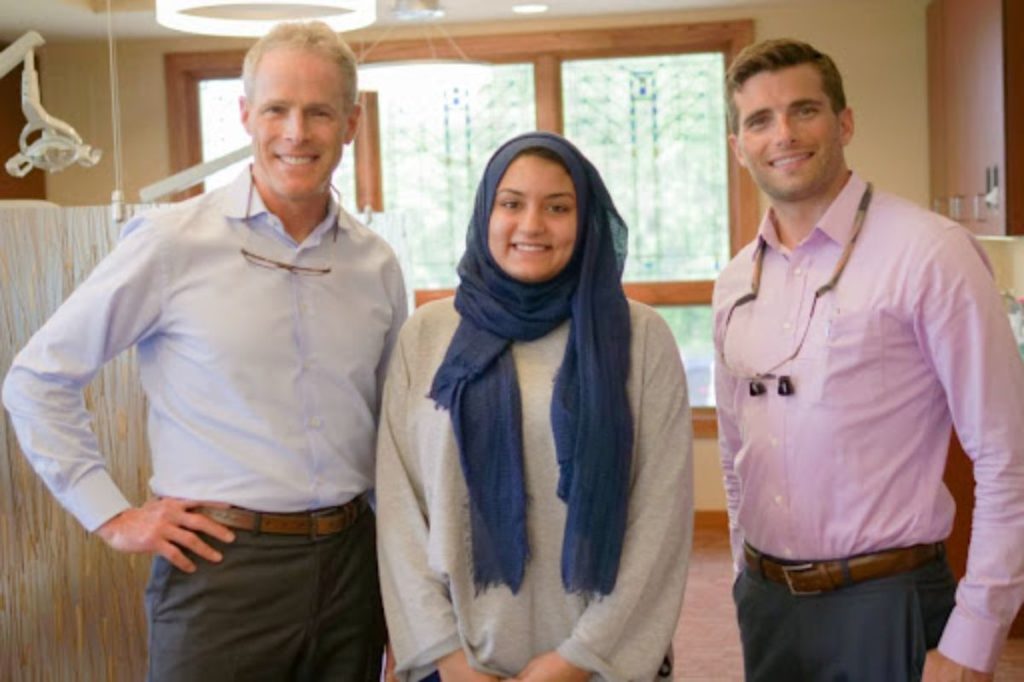Early treatment for your child’s teeth can save huge amounts of time, money, and discomfort down the road. In fact, did you know that the American Association of Orthodontists recommends every child see an orthodontist by the age of 7? Most children around this age will have enough dental “landmarks” in place that their teeth, jaw, and bite can be assessed to ensure everything is developing normally. Though an initial consultation is only the first step in recognizing and treating your child’s potentially misaligned jaw, it is perhaps the most important one. That’s because catching problems early allows the team at Booth Orthodontics to preemptively address orthodontic issues before they become issues, so they know exactly when to treat your child’s potentially misaligned jaw.
While Dr. Ryan Booth customizes every treatment plan to meet the specific needs of the child that he is treating, there are several common conditions he’ll be looking for during your child’s initial evaluation. It can be helpful to outline these so parents understand how orthodontics can help solve your child’s oral challenges! Let’s take a closer look at some of the issues related to misaligned jaws we see most often in young children.
Gapped teeth
Gaps between teeth are very common and can develop for a variety of reasons: genetics, thumb or finger sucking, extended bottle or pacifier use, and even gum disease. Excessive gaps between front teeth can cause insufficient space for other teeth to erupt into the mouth.
If your child has a bit too much space between their teeth, our doctors will be able to identify the underlying cause and create a personalized treatment plan to close the gaps and improve the overall appearance of your child’s smile.
Crowded teeth
You probably already know that healthy teeth and gums are essential to your child’s oral health. Unfortunately, crowded teeth can be difficult to brush and floss effectively, a challenge to oral hygiene which increases the chances of tooth decay and cavities.
If your child has crowded teeth, orthodontic treatment can move them into more optimal positions over time, resulting in a more evenly spaced smile that’s easier to clean! Treatment can also lessen general facial tension and relieve chewing or speech difficulties.
Missing teeth
Sometimes, gaps between teeth exist because of congenitally missing teeth that never grew in. In other cases, these gaps may be created when permanent teeth are lost due to injury or disease.
If this is something your child has experienced, we can use braces to move existing teeth into their proper positions, then place bonded bridges where the missing teeth would have been. This approach allows us to create an evenly-spaced smile for your child that looks great and feels great, too!
Open bite
An open bite is where the upper and lower rows of the front teeth don’t touch or close properly when the mouth is closed. Many open bites come from extended thumb sucking in childhood, which can cause the teeth to grow into a noticeably rounded formation.
Whatever the cause, an open bite can generally be treated with a combination of braces and addressing the habit that caused the open bite whether it is thumb sucking or positioning the tongue forward.
Once treatment is complete, your child will enjoy an aligned bite that allows them to close their teeth and enjoy all their favorite foods with ease.
Deep overbite
When a child has a deep overbite, the lower teeth recede so far behind the upper teeth that they bite into the roof of the mouth. The upper front teeth also overlap the lower front teeth. Out of all the bite disorders, a deep overbite is the most detrimental to the teeth and health of the jaw joints. It can also have an impact on face shape and appearance.
Correcting deep bite misalignments will not only improve the functionality of your child’s teeth but will also dramatically improve the appearance of their smile.
Underbite
An underbite occurs when the bottom teeth bite in front of the upper teeth. This type of bite misalignment can cause pain at the jaw joint, and the angled pressure it creates can wear down teeth over time. An untreated underbite can also cause excessive growth of the lower jaw due to forward positioning of the jaw. Children with underbites have quite a few treatment options available to them, including:
- an upper jaw palate expander
- traditional braces with rubber band elastics to adjust the misaligned teeth and bite
- Braces or an expander with rubber band elastics to fix the bite
Orthodontic treatment like this will often relieve any pain and discomfort associated with the underbite and help normalize growth. It can also make smiling, eating, and even breathing easier for your child!
Overjet
If a child has an overjet, their top front teeth will protrude far beyond the bottom front teeth. This particular malocclusion is often referred to as “buck teeth” and is most effectively treated when diagnosed as early as possible. This gives us the chance to use their growth to our advantage by preemptively guiding a child’s tooth eruption. The child’s age and specific needs will determine what treatment approach we take, but options will usually include:
- bite correction devices
- traditional braces with rubber bands
- Invisalign clear aligners with rubber bands
Once we treat your child’s overjet, they’ll be left with a beautifully balanced, functional smile.
Find the best fit for your child at Booth Orthodontics
Dr. Ryan Booth is proud to provide customized care in a friendly, welcoming atmosphere to every child he treats. If you’ve been wondering if your child would benefit from orthodontic care, we’d love to meet you both and take a look at how your child’s smile is developing!
If you’re in Homer Glen or the surrounding area and would like to know more about the benefits of orthodontics, get in touch today to schedule a FREE consultation. Whatever your child needs, we’ll provide them with the best orthodontic experience possible!
 Dr. Ryan Booth
Dr. Ryan Booth
